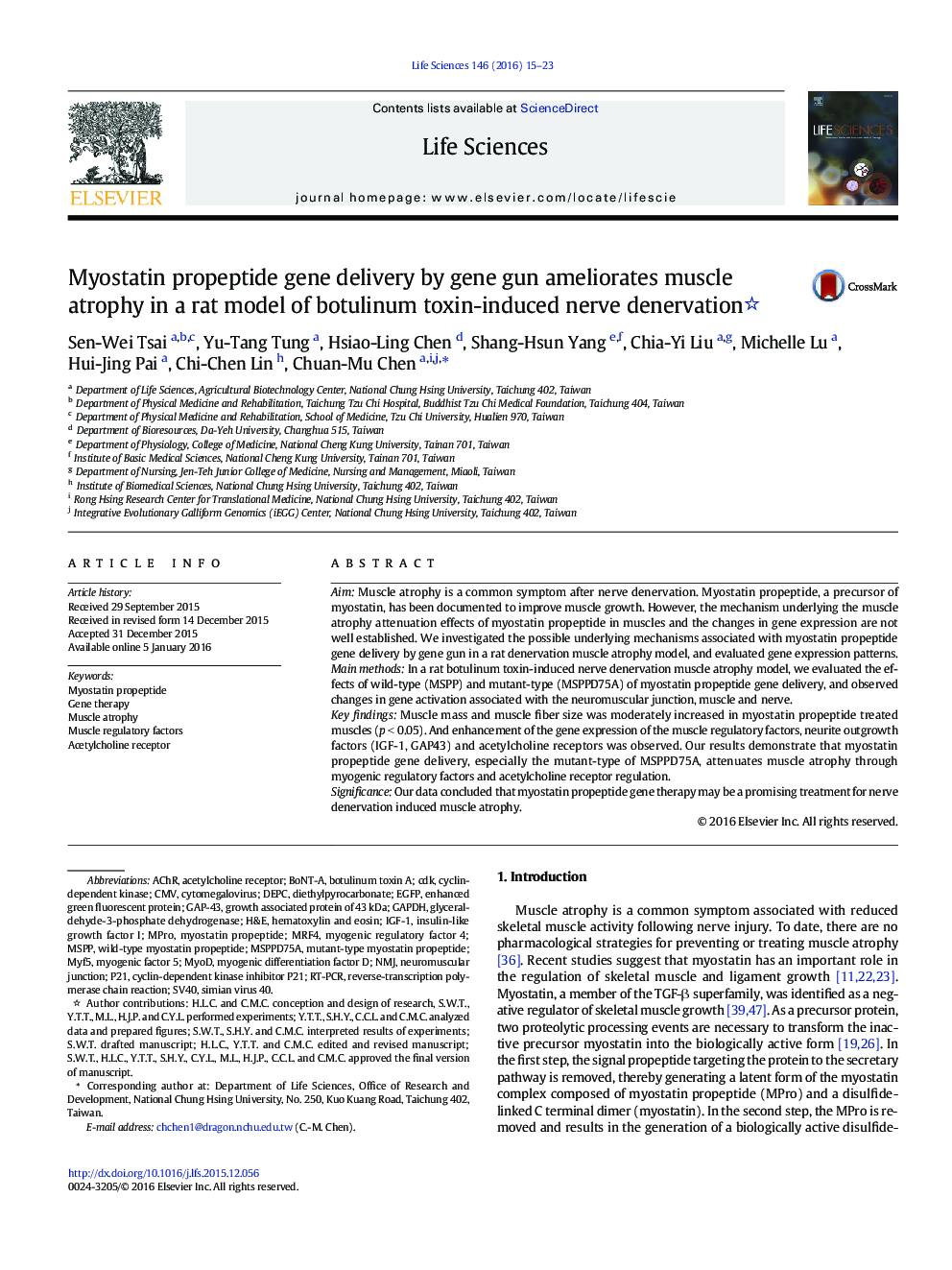| Article ID | Journal | Published Year | Pages | File Type |
|---|---|---|---|---|
| 2550662 | Life Sciences | 2016 | 9 Pages |
AimMuscle atrophy is a common symptom after nerve denervation. Myostatin propeptide, a precursor of myostatin, has been documented to improve muscle growth. However, the mechanism underlying the muscle atrophy attenuation effects of myostatin propeptide in muscles and the changes in gene expression are not well established. We investigated the possible underlying mechanisms associated with myostatin propeptide gene delivery by gene gun in a rat denervation muscle atrophy model, and evaluated gene expression patterns.Main methodsIn a rat botulinum toxin-induced nerve denervation muscle atrophy model, we evaluated the effects of wild-type (MSPP) and mutant-type (MSPPD75A) of myostatin propeptide gene delivery, and observed changes in gene activation associated with the neuromuscular junction, muscle and nerve.Key findingsMuscle mass and muscle fiber size was moderately increased in myostatin propeptide treated muscles (p < 0.05). And enhancement of the gene expression of the muscle regulatory factors, neurite outgrowth factors (IGF-1, GAP43) and acetylcholine receptors was observed. Our results demonstrate that myostatin propeptide gene delivery, especially the mutant-type of MSPPD75A, attenuates muscle atrophy through myogenic regulatory factors and acetylcholine receptor regulation.SignificanceOur data concluded that myostatin propeptide gene therapy may be a promising treatment for nerve denervation induced muscle atrophy.
Graphical abstractFigure optionsDownload full-size imageDownload high-quality image (319 K)Download as PowerPoint slide
